Politics Of Fear
According to statistics, most violent crime occurs in the privacy of homes, while the public space is much safer – but, paradoxically, that is where people are most afraid. Moreover, Europe faces an increasing fear of refugees and of the consequences of current migration movements. That is no less paradoxical, as there is no proven correlation between ethnicity and the number of criminal offences committed. On the contrary: according to the statistics, the crime rate is mostly equal or even lower in the case of immigrants. Crime rate in general can never be taken as a true evaluation of committed crime, meaning that we also have to consider tendencies of groups that are less likely to report a crime committed against them or other distorting facts, and that we however still stick to the academic consensus of using crime rates as a tool for representative comparison. Since events like the New Year’s Eve in Cologne or the incidents at Praterstern in Vienna, however, refugees are under general suspicion. So what is the source of the fear (of refugees) in public space?
Politics Of Fear is a project in which people are invited to participate in different artistic interventions, organized in various public locations in the city. In the first phase, the goal of the project is a survey and public visualization of fear. It is designed to encourage public debate on the subject of (constructed) fear and (feelings of) (un-)certainty in the public space in order to expose and (in exchange) deconstruct the mechanisms by which fear is generated.
What are people afraid of in public places and why? What is the contribution of current migratory movements and related media coverage, and what are the resulting fears of residents and refugees? Are the prevailing fears recognized and taken seriously? What are the effects of the main “fear spaces” on people’s (and especially women’s) behavior and participation in the public space? What are the causes of these fears, and how are fears fomented? (Role of the media, prejudices, etc.) What can help to resolve fears?
In order to encourage passersby to overcome possible inhibitions and express themselves on sensitive issues, different tactics were developed, in which (according to the approach), a certain material is being employed as a vehicle of communication (e.g. paper, fence, wood, water…). In order to visualize and demonstrate the situation as revealed in the project, people are first invited to collaborate in distributing the materials in selected locations, stacking them or laying them out in order to create a space, dedicated to people’s concerns. How much space do people and emotions have in a public place? Where and in what role do the city’s residents see themselves? How can feelings of fear be expressed with the materials provided? How much space should they be given? Where should they be placed and why?
In a second phase following the actions, strategies for the further utilization of the collected fears (in form of the used project materials) are developed in a participatory process with people of the city, aiming to find ways for implementations as temporary installations (e.g. as furniture, sculptures…). The focus in that phase is on the co-design process and on the creation of social spaces, that stimulate interpersonal interactions to facilitate the deconstruction of fears through the emergence of new points of contact.
Experiences and results collected in the course of the project will be published in form of a book and a library of fears (and strategies) in a third phase.
The pictures above show extracts of an action in TBA21 (Thyssen-Bornemisza Art Contemporary, Vienna), where a fence (referring to newly built physical borders across Europe) was installed and used as a display for the collected fears and hopes of people concerning Europe. Throughout the intervention, passersby were invited to exchange “thoughts for fruits” to express emotions that, when outspoken or written down, could then be negotiated, contextualized and discussed. The outcomes, written on papers, were mounted into the fence to become exhibition, base for discourse and part of the the ongoing collection.



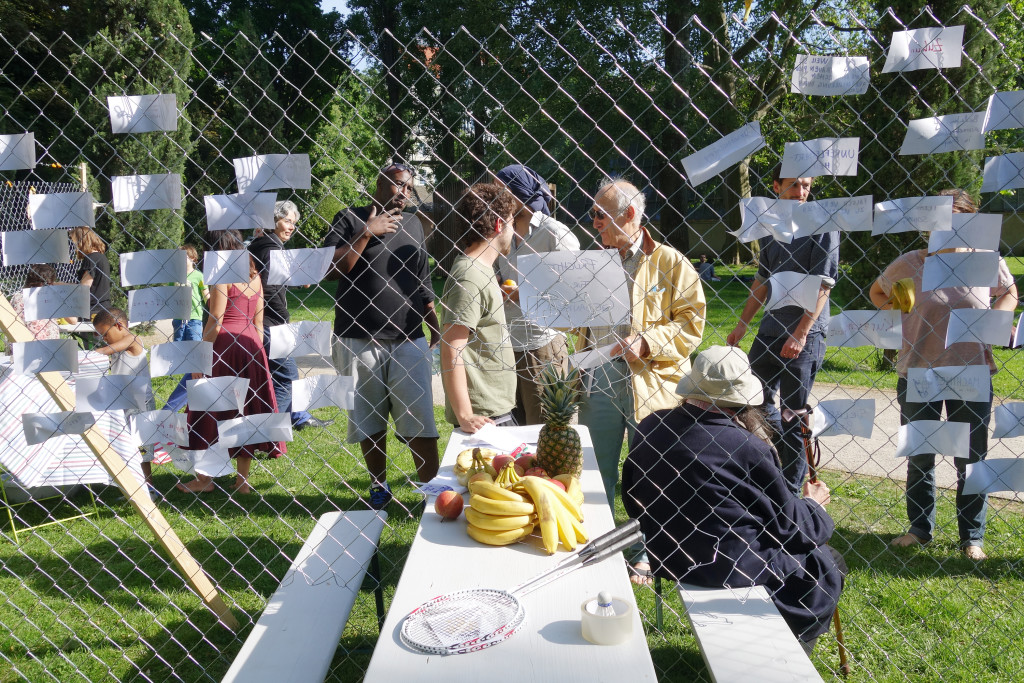
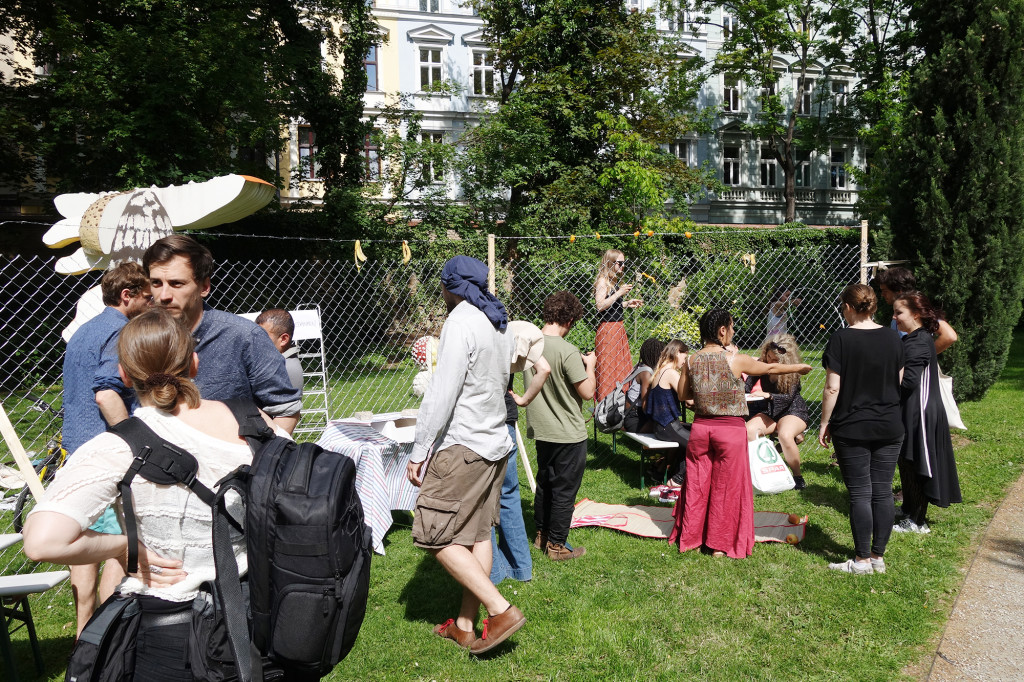
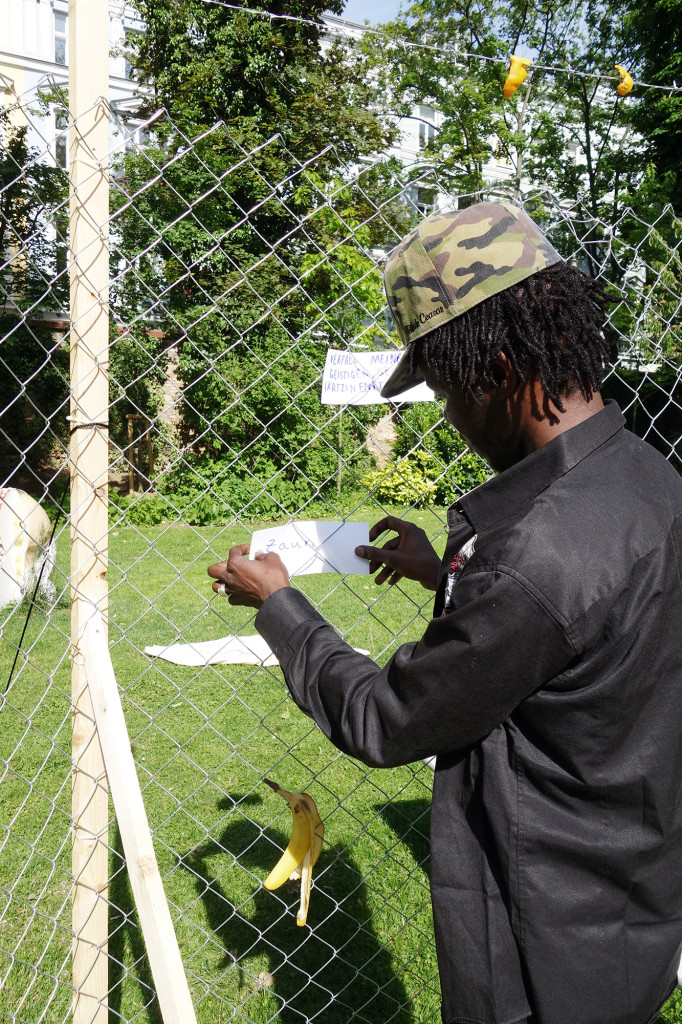
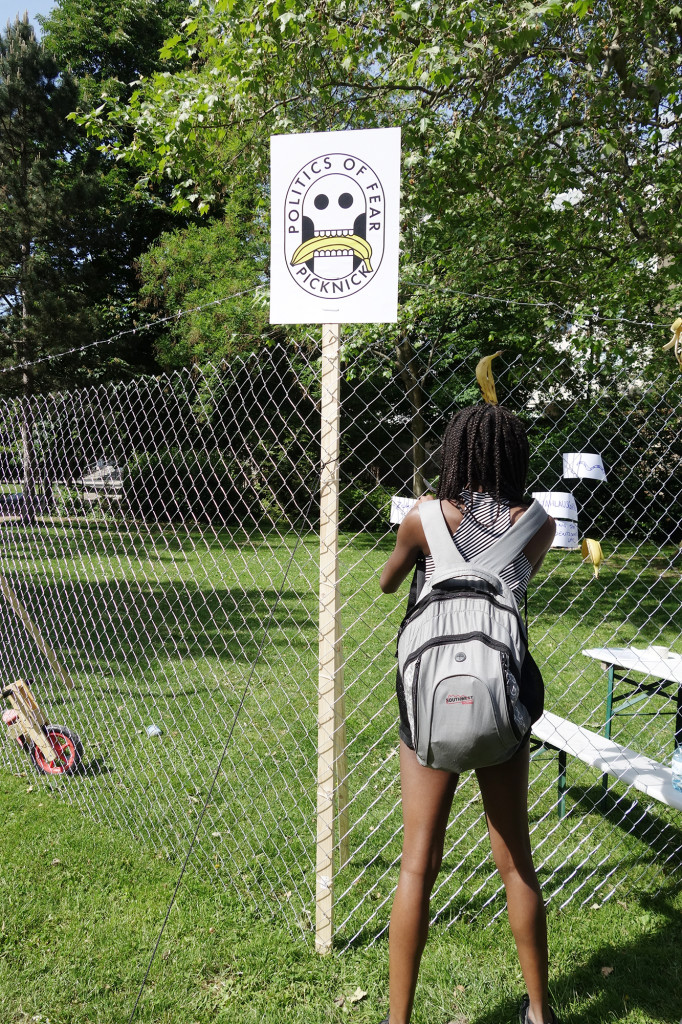

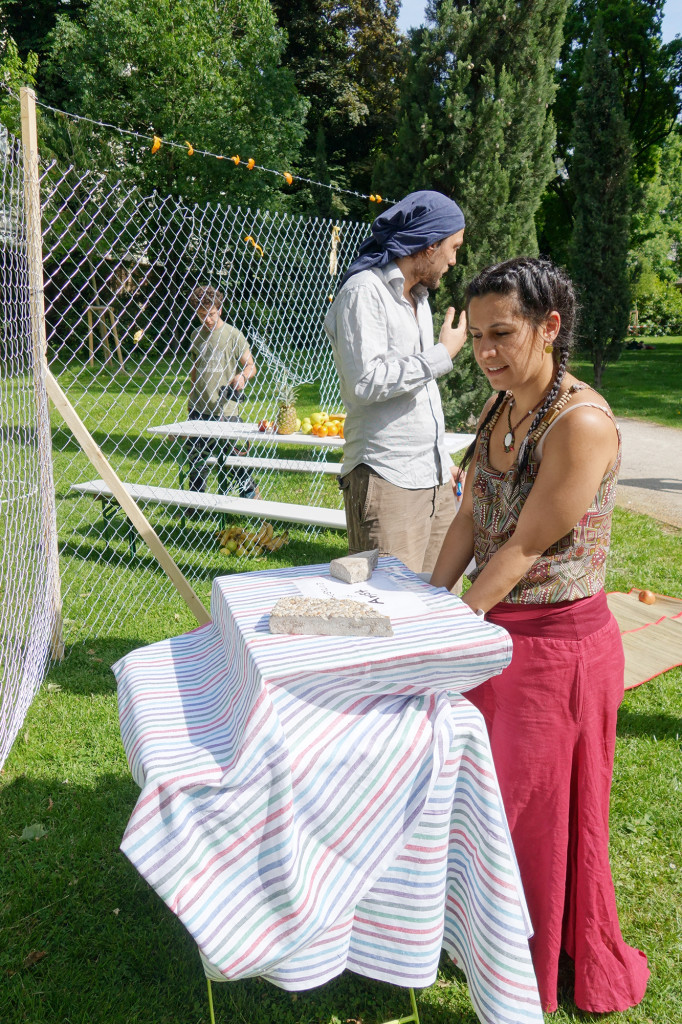

You make a compelling argument through your project but I can’t help but wonder when or if at all fear can be a good thing in public space? There seems to be a fine line between uncertainty and fear, the former appears significantly more acceptable than the latter. What is your relationship like with fear, what nuances are there? Is this project about conquering fear, stripping away fearful approaches to space, or learning to accept fear as part of the everyday condition of urban public space? Indeed, this is an urgent topic for oh-too-many contexts as we witness the decline of use of public space.